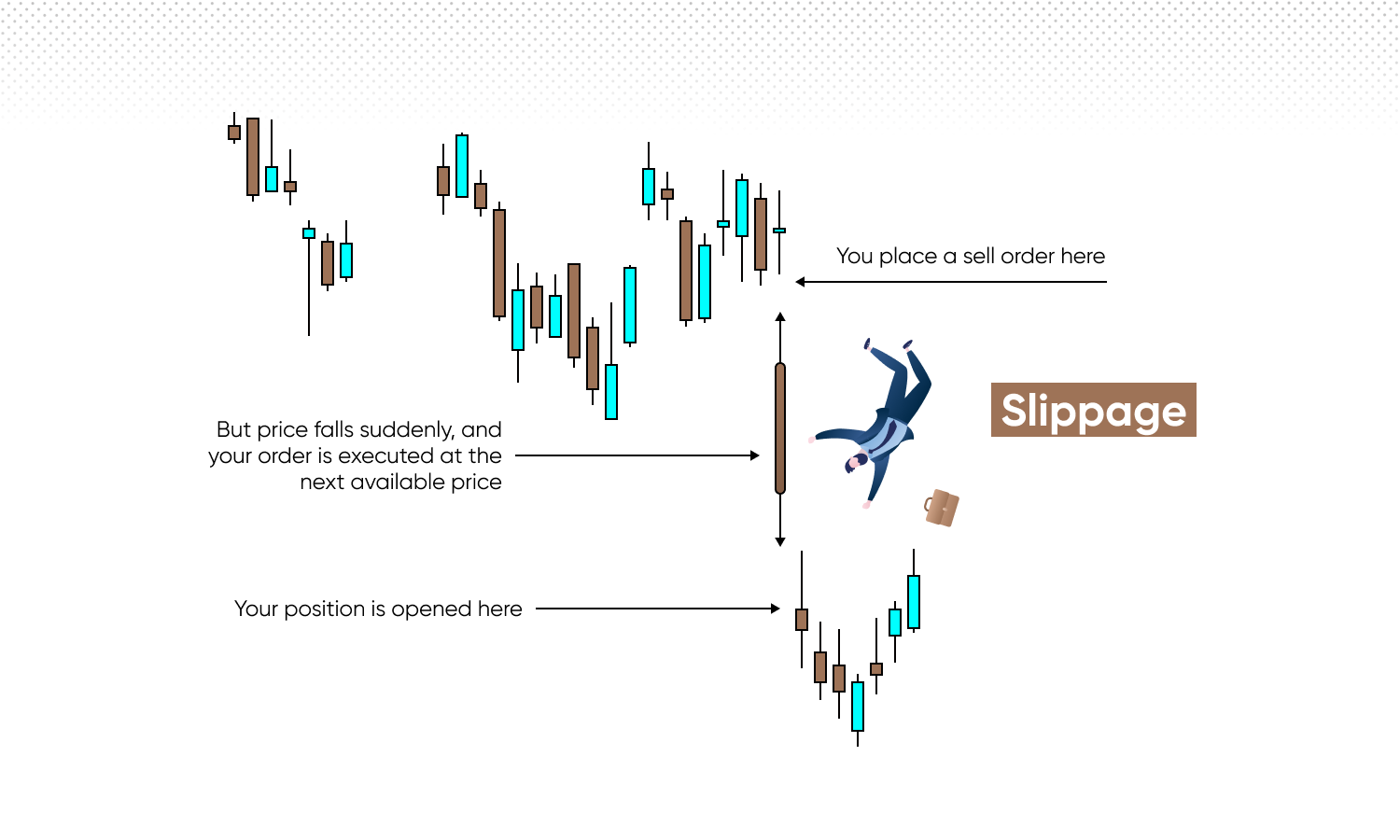What is slippage in finance?

Slippage is the difference between the price a trader expected to pay or receive and the actual price they paid or received because the market moved while their trade was being executed. This can happen even when trading online, in the split second it takes between an order being given and received.
Slippage is an important term in trading as it is present in all buying and selling of securities.
Key takeaways
-
Slippage is when a trader ends up paying a different price when the order is executed due to a sudden fluctuation in an instrument’s price.
-
Slippage can happen with various types of orders including market orders, stop-losses and take-profit orders, and limit orders.
-
It can also happen when a position is held over weekend, when the markets are closed, if something significant happened during that period.
-
To protect themselves from slippage traders can avoid heightened volatility, trade liquid markets and use guaranteed stop-losses.
How does slippage work
Slippage can occur during periods of higher volatility when market orders are used, these are transactions executed as quickly as possible, and the broker is instructed to trade at the best available next price.
For example, slippage can happen when a stop-loss or a take-profit order is used by a trader. The mechanism behind is that traders set those as pending orders that are converted into a market order at a specific price level.
Slippage can also occur when large orders are executed as there may not be enough liquidity to maintain the expected price when the trade occurs.
Among the orders prone to slippage are limit orders, which are instructions to the broker to sell or buy a security at a designated price or better, when a sudden price movement makes it impossible to trade at the price specified in the order.
Although slippage is often considered to be negative, it can in fact be positive for traders. This is because the difference in price between order and purchase of a stock can change for the better.
Types of slippage explained
There are various slippage types, grouped by the type of order or the time slippage occurs.
-
Market-order slippage: Slippage that occurs when heightened volatility leads to the asset’s price change while the market order is being executed.
-
Stop-loss and take-profit order slippage: When the stop-loss or take-profit order is triggered yet the price fluctuations are so quick that the price changes while the market order is being executed.
-
Limit-order slippage: Slippage that happens when sudden price fluctuations makes it impossible to buy or sell a security at the price specified in the order.
-
Weekend slippage: Slippage can occur when a position is held over a weekend, when the markets were closed, and price changes dramatically when they open to reflect the events that have occurred during the period.
Slippage example
Let’s imagine you expect GBP/USD to fall, and open a short position at 1.63102 by requesting a market order. Meanwhile, a series of UK and US economic data is being released at the same time, heightening volatility for the pair. In the time between submitting the order and its execution, the price falls to 1.62000, being affected by slippage. This is an example of market-order slippage in finance.

How to avoid slippage
There are various tactics that can help minimise slippage in trading.
-
Avoiding high volatility: Staying away from the markets with extensive price fluctuations, or refraining from trading during heightened volatility may help traders to protect themselves from slippage.
-
Choosing liquid markets: High liquidity means there is a high volume of active market participants that can accommodate your trading needs at different prices.
-
Using guaranteed stop losses: Guaranteed stop losses can protect traders from slippage as they ensure exiting a position at a specified level. They do come at a fee.
Conclusion
Slippage is when a trader ends up paying a different price when the order is executed due to a sudden fluctuation in an instrument’s price. It can occur with market orders, stop-losses and take-profit orders, limit orders, when a very large order is being executed and when a position is open over the weekend.
To protect themselves slippage traders can avoid times of heightened volatility, trade liquid markets and use guaranteed stop losses.
FAQs
When does slippage most frequently occur?
Slippage often occurs during times of heighted market volatility, when sudden events cause wide price fluctuations.
What is slippage tolerance?
Slippage tolerance is the amount of slippage you are willing to tolerate in your trading.
Is slippage a fee?
No, slippage is not a fee. It happens because of sudden price fluctuation while the order was being executed.
How do you calculate slippage?
To calculate slippage percentage traders can divide the numerical difference between the expected entry price and the worst possible fill price (which is the highest bid for the long position or the lowest ask for a short position).